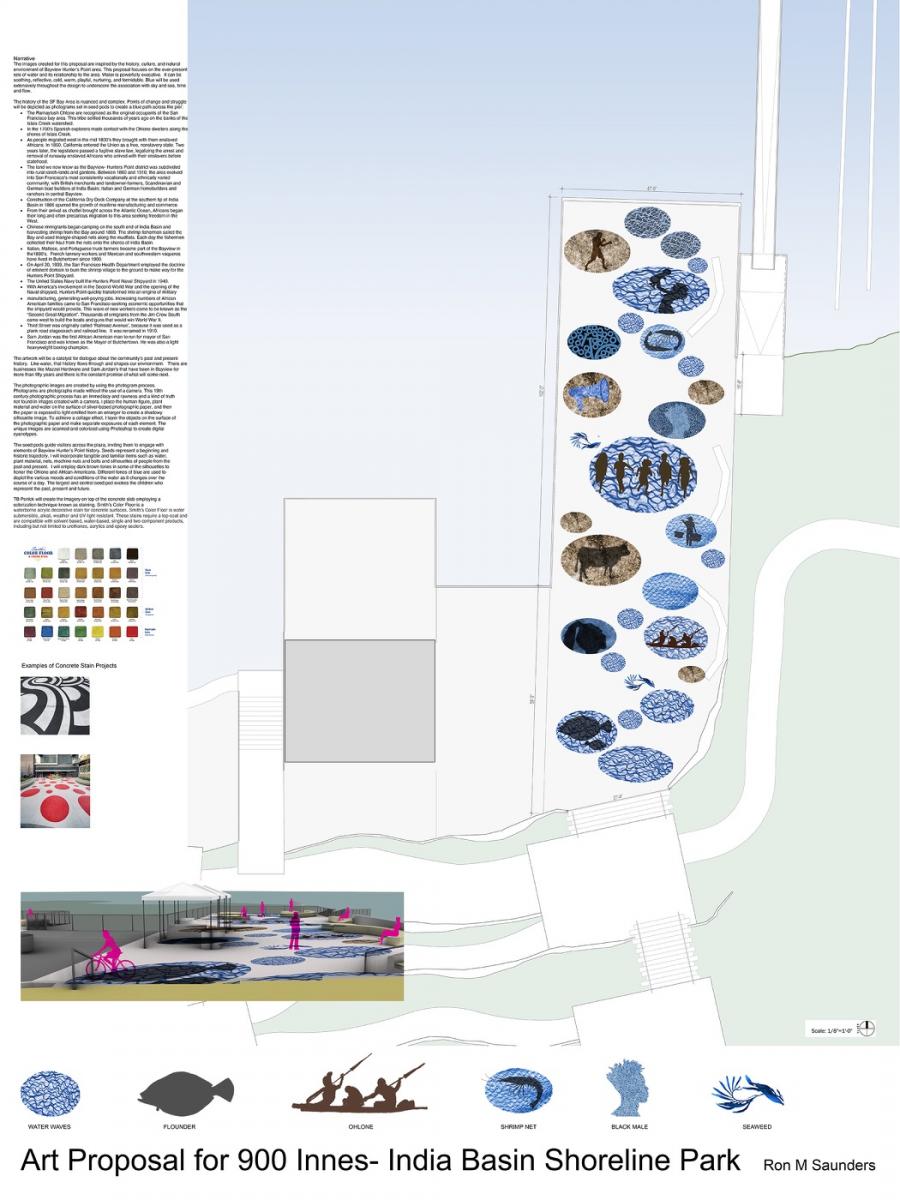 The images created for this proposal are inspired by the history, culture, and natural environment of Bayview Hunter’s Point area. This proposal focuses on the ever-present role of water and its relationship to the area. Water is powerfully evocative. It can be soothing, reflective, cold, warm, playful, nurturing, and formidable. Blue will be used extensively throughout the design to underscore the association with sky and sea, time and flow.
The images created for this proposal are inspired by the history, culture, and natural environment of Bayview Hunter’s Point area. This proposal focuses on the ever-present role of water and its relationship to the area. Water is powerfully evocative. It can be soothing, reflective, cold, warm, playful, nurturing, and formidable. Blue will be used extensively throughout the design to underscore the association with sky and sea, time and flow.
The history of the SF Bay Area is nuanced and complex. Points of change and struggle will be depicted as photograms set in seed pods to create a blue path across the pier:
• The Ramaytush Ohlone are recognized as the original occupants of the San Francisco bay area. This tribe settled thousands of years ago on the banks of the Islais Creek watershed.
• In the 1700’s Spanish explorers made contact with the Ohlone dwellers along the shores of Islais Creek.
• As people migrated west in the mid 1800’s they brought with them enslaved Africans. In 1850, California entered the Union as a free, nonslavery state. Two years later, the legislature passed a fugitive slave law, legalizing the arrest and removal of runaway enslaved Africans who arrived with their enslavers before statehood.
• The land we now know as the Bayview- Hunters Point district was subdivided into rural ranch-lands and gardens. Between 1860 and 1910, the area evolved into San Francisco’s most consistently vocationally and ethnically varied community, with British merchants and landowner-farmers, Scandinavian and German boat builders at India Basin; Italian and German homebuilders and ranchers in central Bayview.
• Construction of the California Dry Dock Company at the southern tip of India Basin in 1866 spurred the growth of maritime manufacturing and commerce.
• From their arrival as chattel brought across the Atlantic Ocean, Africans began their long and often precarious migration to this area seeking freedom in the West.
• Chinese immigrants began camping on the south end of India Basin and harvesting shrimp from the Bay around 1869. The shrimp fishermen sailed the Bay and used triangle-shaped nets along the mudflats. Each day the fishermen collected their haul from the nets onto the shores of India Basin.
• Italian, Maltese, and Portuguese truck farmers became part of the Bayview in the1890’s. French tannery workers and Mexican and southwestern vaqueros have lived in Butchertown since 1900.
• On April 20, 1939, the San Francisco Health Department employed the doctrine of eminent domain to burn the shrimp village to the ground to make way for the Hunters Point Shipyard.
• The United States Navy built the Hunters Point Naval Shipyard in 1940.
• With America’s involvement in the Second World War and the opening of the Naval shipyard, Hunters Point quickly transformed into an engine of military manufacturing, generating well-paying jobs. Increasing numbers of African American families came to San Francisco seeking economic opportunities that the shipyard would provide. This wave of new workers came to be known as the “Second Great Migration”. Thousands of emigrants from the Jim Crow South came west to build the boats and guns that would win World War II.
• Third Street was originally called ‘Railroad Avenue’, because it was used as a plank road stagecoach and railroad line. It was renamed in 1910.
• Sam Jordan was the first African American man to run for mayor of San Francisco and was known as the Mayor of Butchertown. He was also a light heavyweight boxing champion. The artwork will be a catalyst for dialogue about the community’s past and present history. Like water, that history flows through and shapes our environment. There are businesses like Mazzei Hardware and Sam Jordan’s that have been in Bayview for more than fifty years and there is the constant promise of what will come next.
The photographic images are created by using the photogram process. Photograms are photographs made without the use of a camera. This 19th century photographic process has an immediacy and rawness and a kind of truth not found in images created with a camera. I place the human figure, plant material and water on the surface of silver-based photographic paper, and then the paper is exposed to light emitted from an enlarger to create a shadowy silhouette image. To achieve a collage effect, I layer the objects on the surface of the photographic paper and make separate exposures of each element. The unique images are scanned and colorized using Photoshop to create digital cyanotypes.
The seed pods guide visitors across the plaza, inviting them to engage with elements of Bayview Hunter’s Point history. Seeds represent a beginning and historic trajectory. I will incorporate tangible and familiar items such as water, plant material, nets, machine nuts and bolts and silhouettes of people from the past and present. I will employ dark brown tones in some of the silhouettes to honor the Ohlone and African Americans. Different tones of blue are used to depict the various moods and conditions of the water as it changes over the course of a day. The largest and central seed pod evokes the children who represent the past, present and future.
For a larger image of this proposal, please click here.
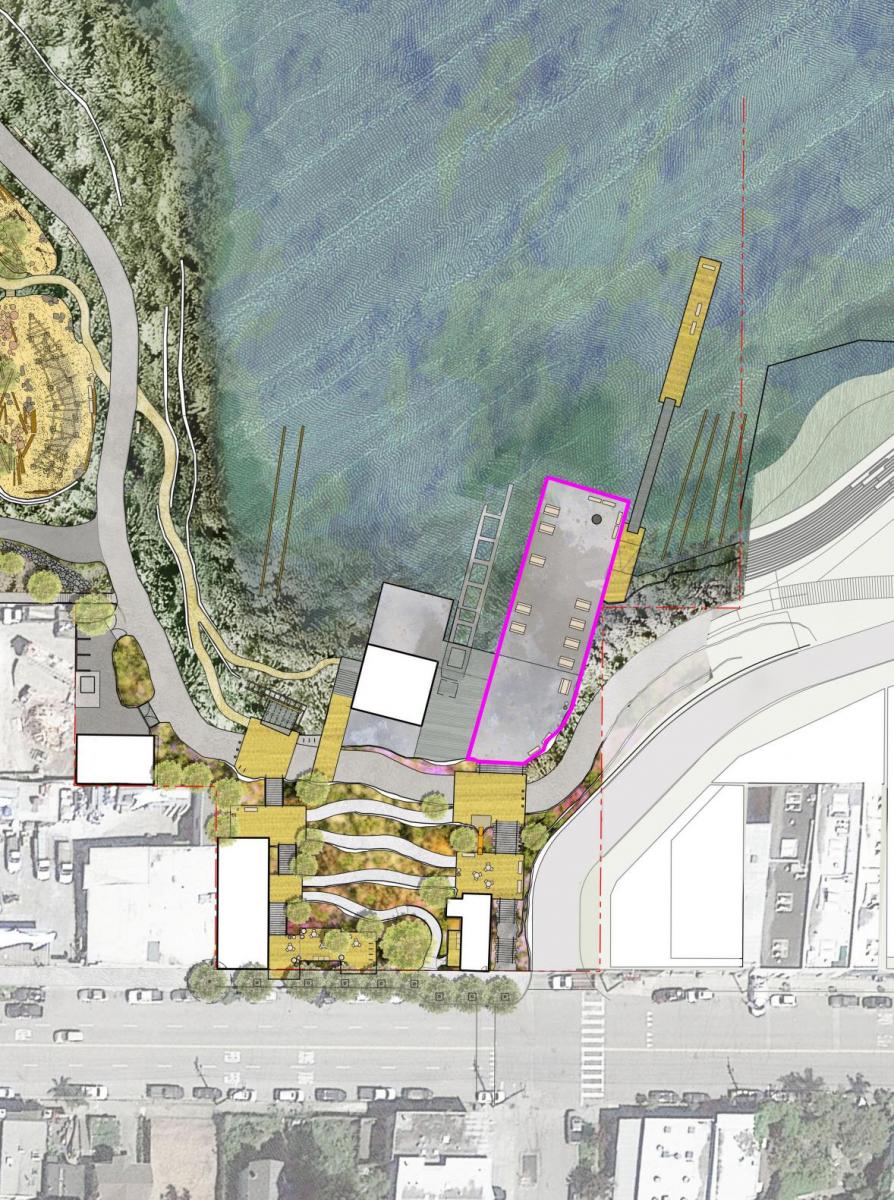 The San Francisco Arts Commission is conducting a review process to select an artist, who will create a 2-dimensional design for the pier at 900 Innes - India Basin Shoreline Park. The space is intended to become a 21st-century legacy park in a historic waterfront context, with an emphasis on habitat and wetland restoration and enhancement, public access, resiliency to sea level rise, social equity, and waterfront recreation. The project goals are to create an artwork with high visibility that will help create a destination point and draw users to the waterfront. Three artists were chosen as finalists to create proposals for the 900 Innes–India Basin Shoreline Park opportunity, they are: Miguel Arzabe, Raylene Gorum, and Ron Saunders.
The San Francisco Arts Commission is conducting a review process to select an artist, who will create a 2-dimensional design for the pier at 900 Innes - India Basin Shoreline Park. The space is intended to become a 21st-century legacy park in a historic waterfront context, with an emphasis on habitat and wetland restoration and enhancement, public access, resiliency to sea level rise, social equity, and waterfront recreation. The project goals are to create an artwork with high visibility that will help create a destination point and draw users to the waterfront. Three artists were chosen as finalists to create proposals for the 900 Innes–India Basin Shoreline Park opportunity, they are: Miguel Arzabe, Raylene Gorum, and Ron Saunders. 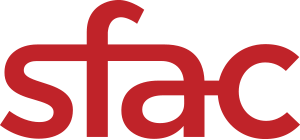
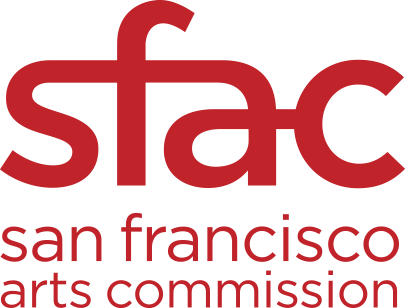

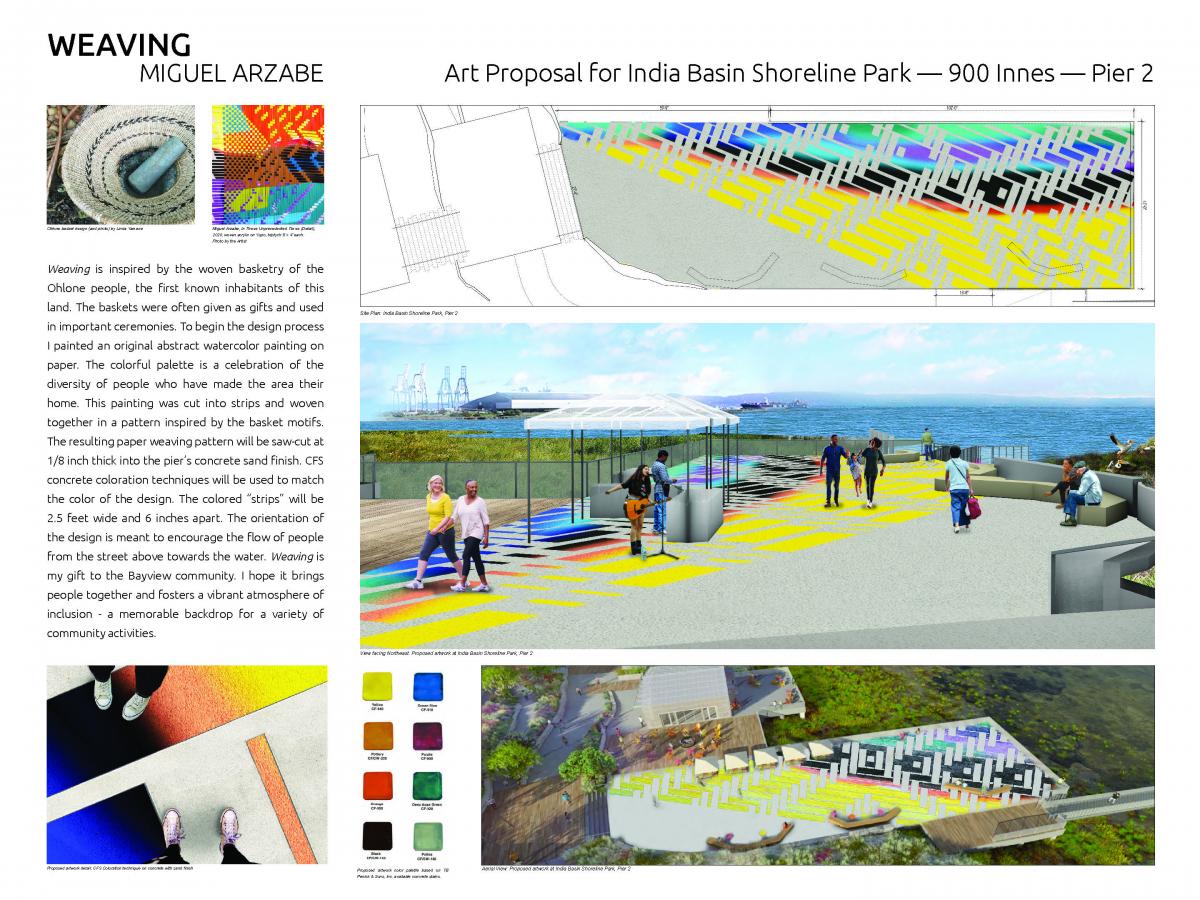 Weaving is inspired by the woven basketry of the Ohlone people, the first known inhabitants of this land. The baskets were often given as gifts and used in important ceremonies. To begin the design process I painted an original abstract watercolor painting on paper. The colorful palette is a celebration of the diversity of people who have made the area their home. This painting was cut into strips and woven together in a pattern inspired by the basket motifs. The resulting paper weaving pattern will be saw-cut at 1/8 inch thick into Pier 2’s concrete sand finish. CFS concrete coloration techniques will be used to match the color of the design. The colored “strips” will be 2.5 feet wide and 6 inches apart. The orientation of the design is meant to encourage the flow of people from the street above towards the water. Weaving is my gift to the Bayview community. I hope it brings people together and fosters a vibrant atmosphere of inclusion - a memorable backdrop for a variety of community activities.
Weaving is inspired by the woven basketry of the Ohlone people, the first known inhabitants of this land. The baskets were often given as gifts and used in important ceremonies. To begin the design process I painted an original abstract watercolor painting on paper. The colorful palette is a celebration of the diversity of people who have made the area their home. This painting was cut into strips and woven together in a pattern inspired by the basket motifs. The resulting paper weaving pattern will be saw-cut at 1/8 inch thick into Pier 2’s concrete sand finish. CFS concrete coloration techniques will be used to match the color of the design. The colored “strips” will be 2.5 feet wide and 6 inches apart. The orientation of the design is meant to encourage the flow of people from the street above towards the water. Weaving is my gift to the Bayview community. I hope it brings people together and fosters a vibrant atmosphere of inclusion - a memorable backdrop for a variety of community activities.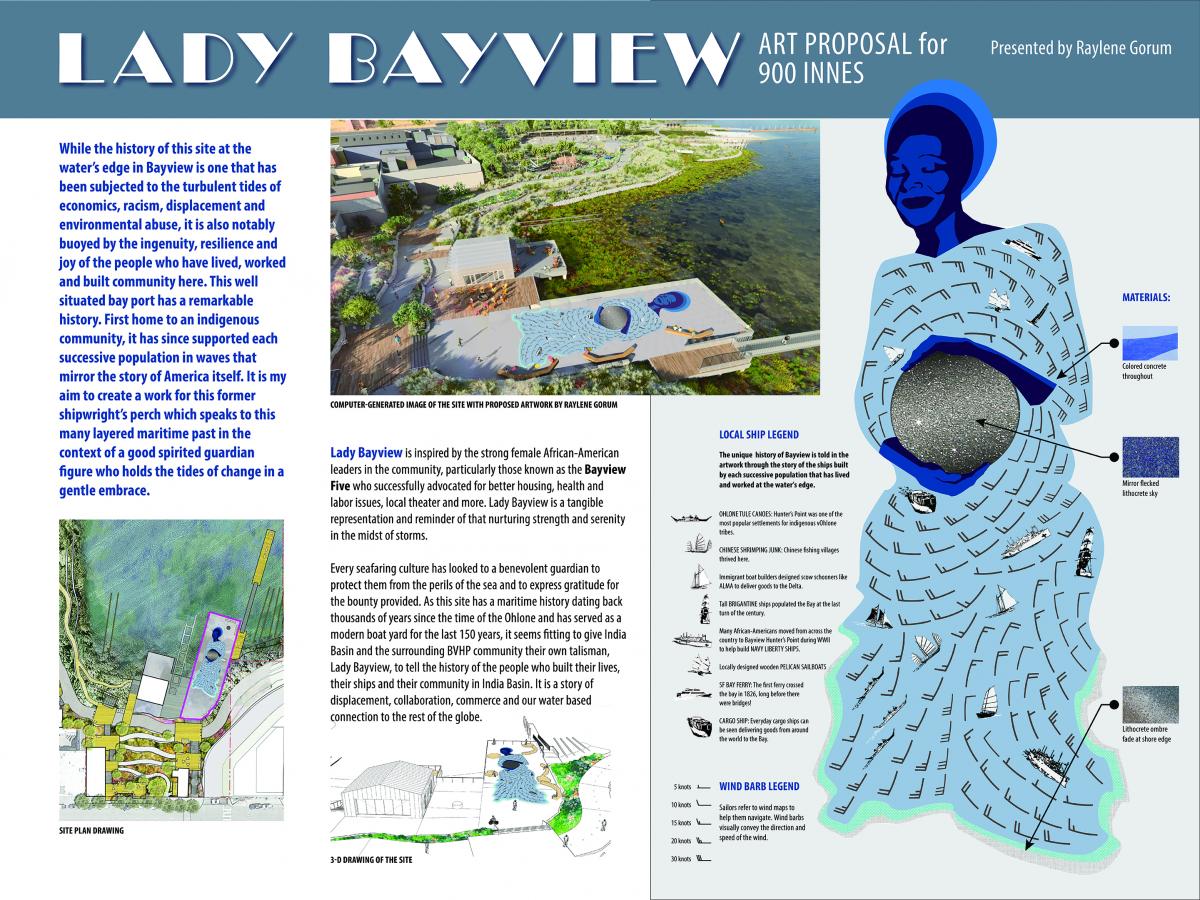 Lady Bayview
Lady Bayview The images created for this proposal are inspired by the history, culture, and natural environment of Bayview Hunter’s Point area. This proposal focuses on the ever-present role of water and its relationship to the area. Water is powerfully evocative. It can be soothing, reflective, cold, warm, playful, nurturing, and formidable. Blue will be used extensively throughout the design to underscore the association with sky and sea, time and flow.
The images created for this proposal are inspired by the history, culture, and natural environment of Bayview Hunter’s Point area. This proposal focuses on the ever-present role of water and its relationship to the area. Water is powerfully evocative. It can be soothing, reflective, cold, warm, playful, nurturing, and formidable. Blue will be used extensively throughout the design to underscore the association with sky and sea, time and flow.
Opportunity For Public Comment
Please take a few minutes to review the proposals on display above and complete a comment form below. You may also email your comments to sfacpublicartcomment@sfgov.org.The Final Review Panel will take place on Wednesday, December 9, 2020, 1 p.m.–5 p.m. via teleconference meeting hosted on Webex. All Artist Review Panel meetings are open to the public. An agenda for the meeting will be posted 72-hour in advance of the meeting on SFAC’s website under the Public Meeting section: www.sfartscommission.org/calendar.